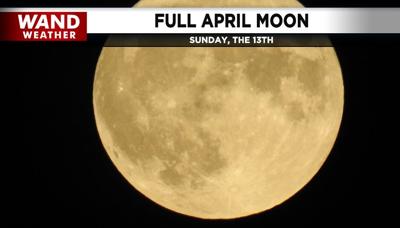(WAND) - Full moons have names that vary across cultures, but many Western traditions draw from Native American naming customs. Below are the names of the full moons, along with their meanings:
January - Wolf Moon: Named for the howling of wolves during the winter months, it signifies hardship and survival.
February - Snow Moon: Marked by heavy snowfall, this moon represents the harsh winter.
March - Worm Moon: Named for the earthworms that emerge as the ground thaws, signaling the arrival of spring.
April - Pink Moon: Named after the early spring flowers (phlox) that bloom in North America; it symbolizes renewal and rebirth.
May - Flower Moon: Reflects the abundance of flowers that bloom during this month, representing beauty and growth.
June - Strawberry Moon: Named for the time of year when strawberries are harvested, it symbolizes abundance and fulfillment.
July - Buck Moon: Named for the time when male deer (bucks) grow new antlers, symbolizing strength and growth.
August - Sturgeon Moon: Named for the large fish that are caught in North American lakes during this time, it represents abundance and prosperity.
September - Harvest Moon: The full moon closest to the autumn equinox, it signals the time for harvest and gathering.
October - Hunter's Moon: Following the harvest, this moon is a time for hunting animals preparing for winter, symbolizing sustenance and survival.
November - Beaver Moon: Named for the time to set beaver traps before the swamps freeze; it represents preparation and resourcefulness.
December - Cold Moon: Signifying the arrival of the coldest season of the year, it embodies introspection and rest.
These names often reflect the seasonal changes and the activities associated with each month, highlighting the connection between lunar cycles and nature










